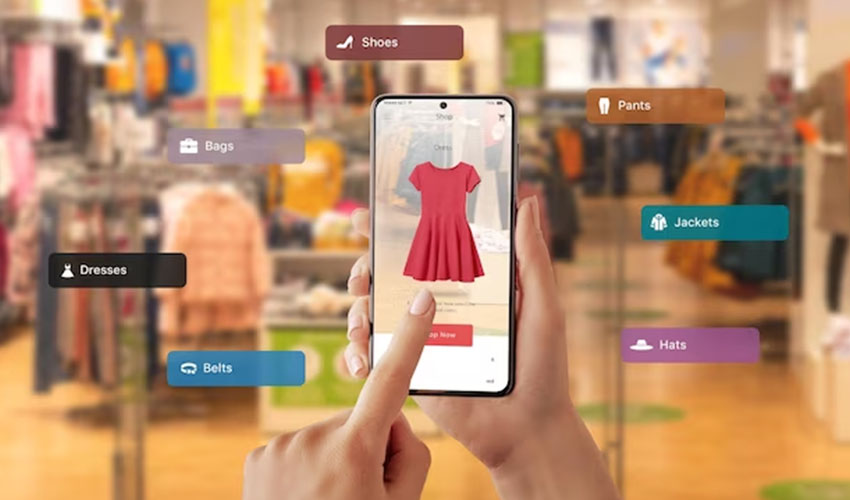Table of Contents
Introduction to E-commerce App Cloning
In the ever-evolving digital ecosystem, where e-commerce reigns supreme, businesses are continually exploring innovative strategies to establish a robust online presence. One such strategy that has gained significant traction is E-commerce App Cloning. This comprehensive introduction aims to unravel the intricacies of E-commerce App Cloning, delving into its conceptual framework, significance in the market, and the myriad possibilities it offers for businesses seeking rapid and efficient entry into the online retail landscape.
1. The Genesis of E-commerce App Cloning
E-commerce App Cloning finds its roots in the desire to replicate the success of established e-commerce giants. The concept emerged as a strategic response to the challenges faced by new entrants in the competitive e-commerce space, offering a shortcut to market with the emulation of successful platforms. By cloning the structure and functionality of proven e-commerce applications, businesses can expedite the development process, minimize risks, and tap into existing user behaviours.
2. Significance in the Modern Business Landscape
In the contemporary business landscape, where time-to-market is a critical factor, E-commerce App Cloning has emerged as a game-changer. This approach allows businesses to bypass the lengthy and resource-intensive process of building an e-commerce platform from scratch. By leveraging the success of established models, companies can focus on customization, branding, and user engagement, thereby accelerating their entry into the digital marketplace.
3. Key Features and Functionality of E-commerce App Clones
The success of any E-commerce App Clone hinges on its features and functionality. Understanding the essential elements that contribute to a seamless user experience is paramount. From an intuitive user interface and smooth navigation to secure payment gateways and personalized recommendations, each feature plays a crucial role in enhancing user satisfaction and driving engagement.
4. Technological Framework and Cross-Platform Compatibility
Selecting the right technological stack is a critical aspect of E-commerce App Cloning. The choice of programming languages, databases, and frameworks should align with the app’s goals and scalability requirements. Moreover, ensuring cross-platform compatibility for both iOS and Android users broadens the app’s reach, catering to a diverse user base.
5. Customization for Branding Identity
While E-commerce App Cloning draws inspiration from existing successful models, customization is the key to establishing a unique brand identity. Tailoring the app to reflect the company’s branding elements, such as logo, color scheme, and messaging, ensures that users recognize and resonate with the brand. This delicate balance between emulation and individuality is crucial for market differentiation.
6. Security Measures in E-commerce App Clone Development
Given the sensitive nature of e-commerce transactions, security is a non-negotiable aspect of E-commerce App Clone development. Implementing robust encryption protocols, secure payment gateways, and conducting regular security audits are essential steps to instill trust in users and safeguard their confidential information.
7. User Feedback Integration for Continuous Improvement
An E-commerce App Clone’s success lies in its ability to evolve based on user feedback. Integrating a user-friendly feedback and rating system enables businesses to gain insights into customer preferences, address concerns, and refine the app for optimal performance. This iterative process of improvement contributes to long-term success and customer satisfaction.
8. Legal and Ethical Considerations in E-commerce App Cloning
The development of E-commerce App Clones necessitates a keen awareness of legal and ethical considerations. Navigating copyright laws, trademark regulations, and data protection standards is vital to avoid legal complications. Upholding ethical practices not only ensures compliance but also contributes to the app’s credibility and longevity.
Key Features of Successful E-commerce Apps
In the fast-paced world of online commerce, the success of an e-commerce app is contingent upon a myriad of factors, ranging from user experience to technological prowess. This article will delve into the extensive landscape of e-commerce app development, elucidating the key features that distinguish highly successful platforms and contribute to their sustained growth. With a focus on enhancing user satisfaction, streamlining functionality, and fostering a secure environment, these features are pivotal for businesses aiming to carve a niche in the competitive e-commerce space.
- Intuitive User Interface (UI) Design: A visually appealing and intuitive user interface is the cornerstone of a successful e-commerce app. Users should be able to navigate effortlessly, with clear categorization, easy-to-use filters, and a seamless checkout process. The UI design should prioritize a mobile-first approach, ensuring a consistent and enjoyable shopping experience across various devices.
- Personalized User Experience: Successful e-commerce apps leverage data analytics to understand user behaviour and preferences. By implementing personalized product recommendations, tailored promotions, and a user-friendly account dashboard, these apps create a personalized shopping journey that resonates with individual users, fostering customer loyalty.
- Efficient Search and Navigation: A robust search and navigation system is crucial for users to find products quickly and easily. Advanced search filters, smart suggestions, and a well-organized product categorization contribute to an efficient and satisfying shopping experience, reducing bounce rates and increasing conversion rates.
- Seamless Checkout Process: The checkout process should be as frictionless as possible. Features such as guest checkout, one-click ordering, and secure payment gateways contribute to a seamless transaction process, reducing cart abandonment rates and enhancing overall user satisfaction.
- Multiple Payment Options: Providing a variety of payment options is essential to cater to diverse user preferences. Successful e-commerce apps integrate credit/debit card payments, digital wallets, and even buy-now-pay-later options, ensuring that users can choose the payment method most convenient for them.
- Real-time Order Tracking: Transparency in the order fulfilment process is key to building trust with customers. Real-time order tracking enables users to monitor the status of their purchases, from order confirmation to shipment and delivery. Push notifications and SMS alerts further enhance the user’s engagement and satisfaction.
- Responsive Customer Support: A responsive and efficient customer support system is indispensable. Successful e-commerce apps incorporate features like live chat, chatbots, and quick-response email systems to address user queries promptly. Proactive customer service contributes to a positive brand image and customer retention.
- Social Media Integration: Integrating social media functionalities allows users to share their purchases, reviews, and wishlist items seamlessly. Social media integration not only enhances the app’s virality but also serves as a powerful marketing tool, leveraging user-generated content and social proof.
- Security Measures: Ensuring the security of user data and financial transactions is paramount. Highly successful e-commerce apps employ robust encryption protocols, and secure sockets layer (SSL) certificates, and comply with industry-standard security practices to instill confidence in users regarding the safety of their personal information.
- User Reviews and Ratings System: The inclusion of a user reviews and ratings system facilitates informed decision-making for potential buyers. It also provides valuable feedback for businesses to understand user satisfaction, identify areas for improvement, and showcase the popularity of products.
- Mobile Optimization: With the increasing prevalence of mobile commerce, successful e-commerce apps prioritize mobile optimization. This includes responsive design, fast loading times, and mobile-specific features to ensure a seamless and enjoyable shopping experience on smartphones and tablets.
- Cross-platform Compatibility: To maximize reach, successful e-commerce apps are compatible with both iOS and Android platforms. Cross-platform development ensures that a diverse range of users can access and interact with the app, contributing to increased market penetration.
- AI and Machine Learning Integration: The integration of artificial intelligence (AI) and machine learning (ML) technologies enhances the overall functionality of e-commerce apps. From predicting user preferences to dynamic pricing strategies and fraud detection, AI and ML contribute to a more intelligent and efficient platform.
- Subscription and Loyalty Programs: Building customer loyalty is a key aspect of sustained success. E-commerce apps often incorporate subscription models, loyalty programs, and exclusive offers to incentivize repeat purchases, creating a dedicated customer base.
- Scalability and Flexibility: Successful e-commerce apps are designed with scalability in mind. The architecture should be flexible enough to accommodate growth, whether it’s an increase in user traffic, product catalogue size, or the introduction of new features. Scalability ensures a smooth and uninterrupted user experience, even during periods of high demand.
Customization Options for App Differentiation
In the ever-evolving landscape of mobile applications, customization stands as a beacon for app developers seeking to distinguish their products in a crowded market. This article will delve into an extensive exploration of customization options for app differentiation, focusing on how developers can tailor their creations to meet the unique needs and preferences of their target audience.
I. User Interface (UI) Customization: Crafting an Intuitive Experience
The UI is the first point of contact between users and an app. Offering customization options in terms of themes, colour schemes, and layout preferences empowers users to personalize their interaction. This not only enhances user satisfaction but also provides a unique visual identity for the app.
1. Theme Selection: Allowing users to choose from a variety of themes can transform the overall look and feel of the app. Whether it’s a dark mode for reduced eye strain or a vibrant theme for a lively experience, giving users control over their visual environment fosters a sense of ownership.
2. Color Palette Customization: Enabling users to customize the app’s colour palette adds a personal touch. Some users may prefer a minimalist aesthetic with muted tones, while others may opt for bold and vibrant colours. Providing these choices enhances user engagement and satisfaction.
3. Layout Preferences: Flexible layout options cater to diverse user preferences. Some users may prefer a grid layout for simplicity, while others may opt for a list view for a more detailed overview. Offering these customization options ensures that users can tailor the app to suit their unique navigation style.
II. Functional Customization: Tailoring Features to User Needs
Beyond visual elements, the functionality of an app plays a crucial role in user engagement. Allowing users to customize features based on their specific needs ensures a personalized and efficient user experience.
1. Widget Customization: Widgets provide quick access to key features. Allowing users to customize widget placements, sizes, and content ensures that the app aligns with their workflow and priorities.
2. Notification Preferences: Not all users have the same tolerance for notifications. Providing customization options for the frequency, type, and timing of notifications allows users to stay informed without feeling overwhelmed.
3. Gesture Controls: Integrating customizable gesture controls adds a layer of personalization to app navigation. Users can define gestures for actions such as swiping, tapping, or pinching, creating a tailored and intuitive interaction experience.
4. Feature Modules: Consider breaking down the app into modular features that users can enable or disable based on their preferences. This approach streamlines the user interface and ensures that users only interact with the features relevant to them.
III. Content Personalization: Curating Unique User Experiences
Tailoring content based on user preferences is a powerful way to enhance user engagement. By understanding user behaviour and preferences, developers can deliver personalized content that resonates with each individual.
1. User Profiles and Preferences: Implementing user profiles where individuals can specify their preferences, interests, and behaviours enables the app to curate content that aligns with their unique tastes.
2. AI-driven Recommendations: Leveraging artificial intelligence to analyze user behaviour and provide intelligent recommendations enhances the overall user experience. This can include personalized product recommendations, content suggestions, or even tailored workout routines.
3. Localization and Language Preferences: Customizing the app to support multiple languages and regional content ensures that users from diverse backgrounds can engage with the app in their preferred language and cultural context.
IV. Social Integration: Fostering Community and Connection
In an era where social interaction is integral to the user experience, integrating social features and customization options can create a sense of community within the app.
1. Profile Customization: Allowing users to customize their profiles with avatars, bios, and other personal details fosters a sense of identity within the app’s community.
2. Social Sharing Options: Enabling users to customize how they share their achievements, purchases, or experiences within the app on social media platforms enhances the app’s visibility and encourages user-generated content.
3. Community Customization: For apps that include community forums or discussion boards, providing customization options for the look and feel of these spaces can create a more personalized and inviting environment.
V. Monetization Customization: Balancing Revenue and User Experience
Monetization is a critical aspect of app development, but striking the right balance between generating revenue and providing a positive user experience is essential. Customization options can play a role in this delicate equilibrium.
1. Ad Personalization: Allowing users to customize their ad preferences, such as frequency or content relevance, ensures that ads are more targeted and less intrusive.
2. Subscription Tiers: For subscription-based models, offering different tiers with varying levels of customization options can cater to users with different needs and budgets.
3. In-App Purchase Customization: Providing customization options for in-app purchases, such as personalized bundles or limited-time offers, can incentivize users to make purchases while feeling that they have control over their spending.
Security and Privacy Customization: Empowering User Control
With growing concerns about data privacy and security, giving users control over their privacy settings is crucial. Customization options in this realm contribute to a transparent and trustworthy user experience.
1. Privacy Settings: Allowing users to customize their privacy settings, including data sharing preferences and permissions, builds trust and transparency.
2. Two-Factor Authentication (2FA): For apps dealing with sensitive information, offering 2FA as a customizable security feature adds an extra layer of protection for users who prioritize security.
3. Data Deletion and Storage Options: Enabling users to customize data retention settings and providing easy options for data deletion gives users a sense of control over their personal information.
Cross-Platform Customization: Ensuring Consistency Across Devices
In an era of multi-device usage, ensuring a consistent experience across platforms is essential. Customization options that synchronize seamlessly across devices contribute to a cohesive user experience.
1. Synced Preferences: Customization preferences, such as themes, layouts, and saved settings, should seamlessly sync across a user’s various devices, ensuring a unified experience.
2. Responsive Design: Designing the app with a responsive approach ensures that customization options adapt gracefully to different screen sizes, maintaining usability and aesthetics across devices.
Market Trends and Future Prospects in E-commerce App Cloning
The world of e-commerce has undergone a paradigm shift with the advent of app cloning, offering businesses a shortcut to success by replicating proven models. In this in-depth exploration, we’ll analyze the current market trends in E-commerce App Cloning and forecast its prospects.
Market Trends
- Rise of Niche E-commerce: E-commerce App Cloning has enabled the emergence of niche markets. Entrepreneurs can now target specific demographics or industries by customizing existing models. This trend has led to the proliferation of specialized e-commerce platforms catering to unique consumer needs.
- Integration of Augmented Reality (AR) and Virtual Reality (VR): As technology advances, incorporating AR and VR in E-commerce App Clones has gained traction. This trend enhances the online shopping experience by allowing users to try products before making a purchase decision. This immersive approach is reshaping the way consumers interact with e-commerce platforms.
- Personalization through Artificial Intelligence (AI): AI algorithms are becoming integral to E-commerce App Clones, offering personalized product recommendations based on user behavior and preferences. This level of customization not only enhances user satisfaction but also contributes to increased sales and customer retention.
- Blockchain for Security and Transparency: Security concerns in e-commerce have led to the adoption of blockchain technology. E-commerce App Clones are incorporating blockchain for secure transactions, protecting user data, and ensuring transparency in the supply chain. This trend is poised to play a pivotal role in building trust among users.
- Social Commerce Integration: The convergence of social media and e-commerce is a noteworthy trend. E-commerce App Clones are integrating social commerce features, allowing users to discover and purchase products directly through social platforms. This trend leverages the power of social networks for seamless shopping experiences.
- Sustainable and Ethical E-commerce: With an increasing focus on sustainability, E-commerce App Cloning is witnessing a trend towards environmentally conscious practices. Platforms are incorporating features that highlight eco-friendly products and ethical business practices, aligning with the values of socially conscious consumers.
- Voice Commerce on the Rise: Voice-activated technologies are reshaping how users interact with E-commerce App Clones. The integration of voice assistants allows users to search for products, place orders, and track deliveries through voice commands. This trend is expected to gain prominence as voice recognition technology continues to improve.
- Globalization and Cross-Border E-commerce: E-commerce App Clones are facilitating cross-border trade by breaking down geographical barriers. With streamlined payment processes and multilingual support, businesses can expand their reach and cater to a global audience, opening new avenues for growth.
Future Prospects
- Enhanced Augmentation Technologies: The future of E-commerce App Cloning lies in the continuous evolution of augmentation technologies. AR and VR are expected to become even more sophisticated, offering users a hyper-realistic shopping experience. This advancement will likely redefine the boundaries between physical and online retail.
- AI-Driven Predictive Analytics: AI-driven predictive analytics will play a crucial role in shaping the future of E-commerce App Cloning. Advanced algorithms will anticipate consumer trends, allowing businesses to proactively adapt their strategies and stay ahead of the competition. This predictive capability will optimize inventory management and enhance overall business efficiency.
- Decentralized E-commerce Platforms: The decentralization of e-commerce platforms through blockchain technology is poised to increase. Decentralized platforms provide enhanced security, eliminate intermediaries, and empower users with greater control over their data. This shift towards decentralization aligns with the principles of blockchain technology and may redefine the landscape of online commerce.
- Immersive Shopping Experiences: Immersive technologies, including extended reality (XR), will redefine how users engage with E-commerce App Clones. The future holds the promise of hyper-personalized and immersive shopping experiences, allowing users to virtually explore products in a three-dimensional space. This innovation will significantly impact user engagement and satisfaction.
- Advanced Cybersecurity Measures: As cyber threats continue to evolve, E-commerce App Clones will invest heavily in advanced cybersecurity measures. From biometric authentication to AI-powered threat detection, the future will see a heightened focus on ensuring the security and privacy of user data, fostering trust among online shoppers.
- Voice Commerce Evolution: Voice commerce is expected to evolve beyond basic voice commands. Natural language processing improvements will enable more complex interactions, allowing users to engage in detailed product inquiries and receive personalized recommendations through voice interfaces. This evolution will further integrate voice commerce into the mainstream.
- Eco-Friendly Practices and Green Logistics: The future of E-commerce App Cloning will witness a deeper commitment to eco-friendly practices. From sustainable packaging to green logistics, platforms will prioritize environmental consciousness. This shift is not only driven by consumer preferences but also by the growing global emphasis on sustainable business practices.
- Artificial Intelligence for Customer Support: AI-driven customer support will become more sophisticated, providing instant and personalized assistance to users. Chatbots and virtual assistants will handle routine queries, while AI algorithms analyze user behaviour to offer proactive support. This advancement aims to enhance the overall customer service experience.
conclusion
E-commerce App Clone development offers a strategic avenue for businesses aiming to establish a robust online presence quickly. By embracing the right technologies, prioritizing security, and customizing for branding, businesses can create a unique platform that resonates with users while benefiting from the proven success of established e-commerce models.
Thanks for reading our post “E-commerce App Clone Development”. Please connect with us to learn more about the E-commerce App Clone.















